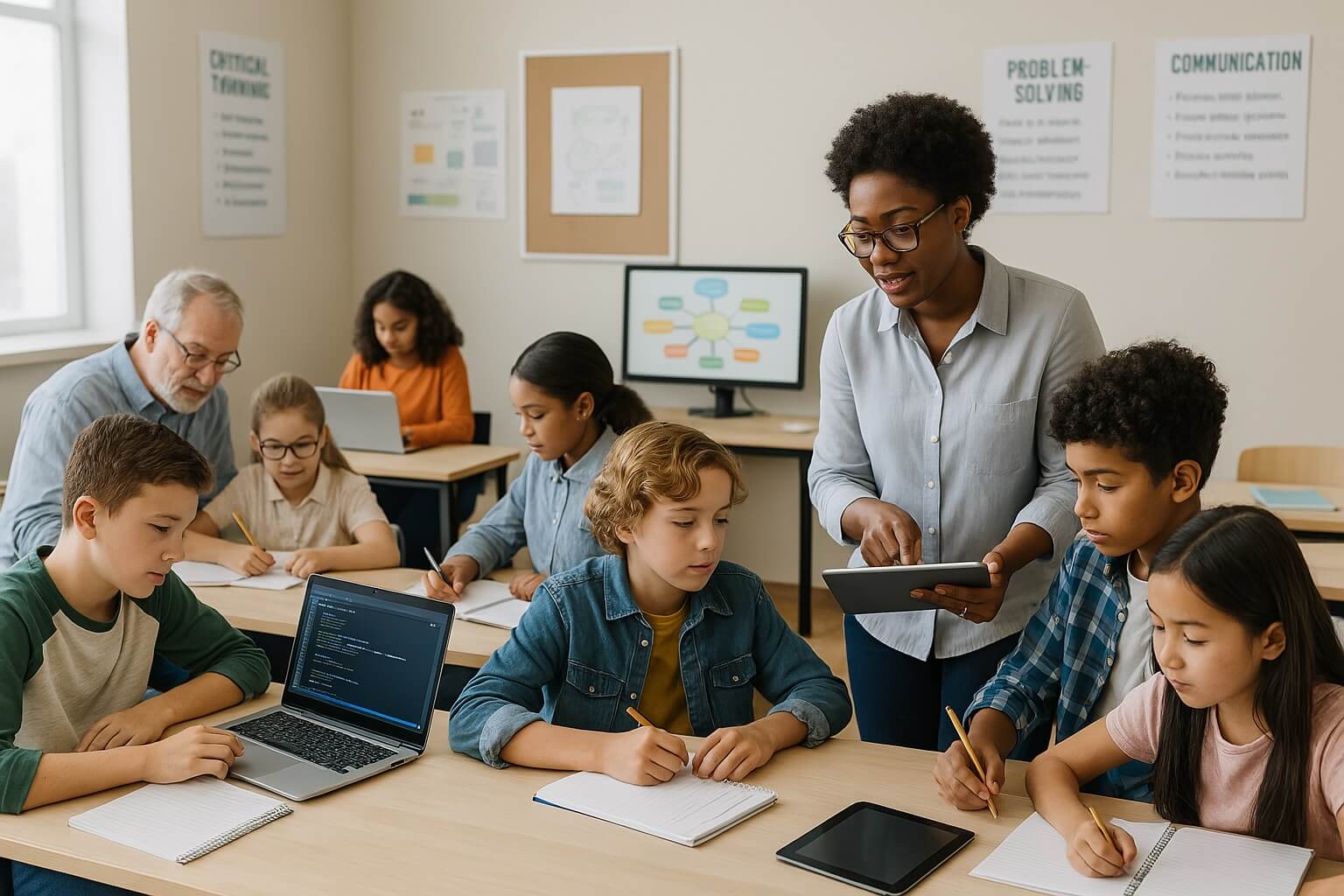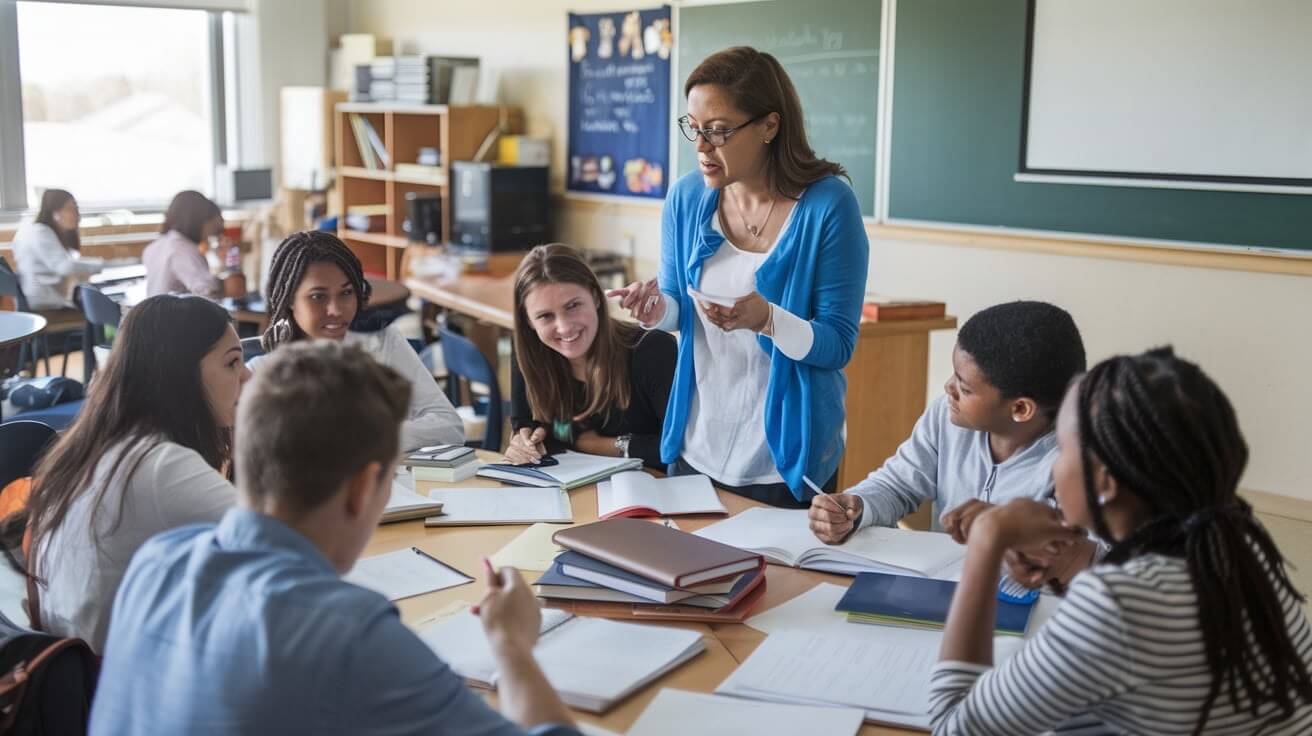
Learning skills are how we learn, not what we know. They include how we take in new information, make sense of it, and apply it in real life. These skills aren’t tied to any subject or tool—they’re needed in every setting, from school to work to home.
Think about someone who can organize their thoughts, solve problems, ask good questions, or collaborate. That’s someone with strong learning skills. These habits and approaches help learners stay confident, curious, and ready for change.
Table of Content
- Why the Focus on Learning Skills Has Grown
- The Three Core Areas of Learning Skills
- What Are 21st-Century Learning Skills?
- How Technology Changes How We Learn
- Blending Traditional Learning with Digital Tools
- Why Digital Literacy Is Part of Learning Skills
- What We Can Learn from Finland’s Education Model
- Tools That Support Learning Skills
- Technology Doesn’t Fix Everything: The Access Gap
- How Learning Skills Grow Across Education Levels
- Why Lifelong Learning Needs Learning Skills
- The Challenges of Building Learning Skills Through Technology
- Simple, Proven Ways to Strengthen Learning Skills
- What Do Experts Recommend?
- What Do the Numbers Say?
- What Can Parents and Teachers Do?
- How Policy Can Help Build Learning Skills
- Conclusion
- FAQs

Why the Focus on Learning Skills Has Grown
Today, More jobs require continuous thinking, adaptation, and learning. Memorizing facts isn’t enough anymore. Real success depends on skills like problem-solving, collaboration, and time management.
After schools went online during COVID-19, a gap appeared between those who could learn independently and those who couldn’t. In 2022, a report by McKinsey found that students with better learning habits were over 40% more likely to stay engaged with online learning platforms.
The Three Core Areas of Learning Skills
Cognitive Skills
These involve understanding, analyzing, and remembering. Skills like comparing ideas, making connections, or finding patterns fall under this category.
Metacognitive Skills
This is thinking about your thinking, such as knowing when to take a break, recognizing when you're stuck, or planning how to study smarter. According to research published in the Journal of Educational Psychology, students who regularly reflect on their learning perform better in all subjects.
Social and Emotional Skills
These help us work with others and manage emotions. They include empathy, cooperation, patience, and self-regulation. The OECD (2021) emphasized these skills as essential in education that prepares students for real life.
What Are 21st-Century Learning Skills?

These are often grouped into four areas:
-
Critical thinking: Questioning what you read or hear instead of accepting it blindly.
-
Creativity: Finding new ways to solve everyday problems.
-
Collaboration: Working well with classmates or colleagues, even from different backgrounds.
-
Communication: Sharing your thoughts clearly, whether you're writing a paper or talking in a team meeting.
These skills go hand-in-hand with technology, where students often work across platforms, apps, and online teams.
How Technology Changes How We Learn
Technology doesn’t just replace books or whiteboards. It offers new ways of learning. For example:
-
Watching videos that explain tough topics.
-
Joining online discussions with people from other countries.
-
Using tools that adjust questions based on how you're doing.
Dr. Justin Reich from MIT has pointed out that when digital tools are used with a clear purpose, they help students become more reflective and independent.
Blending Traditional Learning with Digital Tools
Many schools now combine classroom teaching with online activities. This method allows students to progress at their own pace and revisit topics when necessary.
Let’s take a real-life example. In 2023, Singapore’s education system began using blended learning in all secondary schools. Students attend classes, but they also use online tools to explore topics more deeply or work on projects.
Why Digital Literacy Is Part of Learning Skills
Being digitally literate means more than using a computer. It includes:
-
Knowing how to search for information responsibly.
-
Being safe online.
-
Understanding how to use apps and platforms to learn or communicate.
According to a 2021 report by UNESCO, over 50% of students in low-income countries lack digital literacy skills. This gap affects learning and limits future work opportunities.
What We Can Learn from Finland’s Education Model
Finland changed its education model to focus on “phenomenon-based learning.” Instead of dividing subjects strictly, students explore real-world topics through a mix of history, science, and language. Technology is used as a tool, not a subject.
The Finnish National Agency for Education found that students were more involved and better at connecting ideas across different subjects after the change.
Tools That Support Learning Skills
Learning Management Systems (LMS)
Platforms like Google Classroom or Moodle help teachers track progress and give feedback. Students can upload homework, check their grades, or rewatch a lesson.
Adaptive Learning Software
Apps such as Knewton or DreamBox change the questions based on students' answers. If you’re struggling, the system adjusts to help you practice more.
Gamified Learning Platforms
Games like Kahoot or Prodigy help with memory and motivation. They’re beneficial in keeping younger students interested.
Technology Doesn’t Fix Everything: The Access Gap
Many students still lack steady internet access or devices. Others may have the tools but not the skills to use for real learning.
The World Bank (2023) reported that nearly one-third of students globally lack proper access to digital learning. This isn't just a tech issue—it's a learning equity problem.
How Learning Skills Grow Across Education Levels
Primary School
Students start by learning to pay attention, follow directions, and explore ideas through play. Simple apps and story-driven learning platforms help.
Secondary School
Teenagers develop more independence. They begin planning their studies, managing projects, and collaborating with others. Online assignments and research activities support this shift.
Higher Education
University students are expected to handle their learning. They must think critically, research deeply, and communicate clearly. Learning platforms and peer collaboration tools help manage these expectations.
Why Lifelong Learning Needs Learning Skills
It’s no longer enough to stop learning after school. Careers change, technology updates, and new knowledge keeps emerging.
That’s why adults are turning to platforms like Coursera, LinkedIn Learning, and Skillshare. In 2022, the World Economic Forum found that 50% of workers will need new skills within the next two years. Those who have learning skills—like self-direction, time management, and critical thinking—can adjust and grow more efficiently.
The Challenges of Building Learning Skills Through Technology
Technology has benefits, but it can also distract. Too many notifications, endless videos, or apps with no learning goal can overwhelm students.
Other challenges include:
-
Short attention spans
-
Lack of face-to-face feedback
-
Poor digital habits (like copy-pasting or skipping instructions)
Students need help setting goals, organizing their digital space, and reflecting on what worked or didn’t.
Simple, Proven Ways to Strengthen Learning Skills
Here are four research-backed practices:
-
Spaced repetition: Studying over time helps information stick better than cramming.
-
Mind mapping: Drawing diagrams to organize ideas boosts understanding.
-
Socratic questioning: Asking “why?” and “what’s the evidence?” deepens thinking.
-
Learning journals: Writing down what you’ve learned, what confused you, and how you overcame it improves memory and planning.
The National Research Council in the U.S. confirms that these strategies are linked to better academic and long-term outcomes.
What Do Experts Recommend?
Carol Dweck (Stanford) encourages building a “growth mindset.” This means seeing mistakes as part of learning and believing effort matters.
Dr. John Hattie (Melbourne University) supports “visible learning,” where students are aware of what they’re learning and why.
Both approaches rely on building learning skills—not just teaching facts.
What Do the Numbers Say?
-
A 2023 OECD study found that schools that focused on learning strategies saw a 15–20% rise in student outcomes.
-
APA’s research confirms that students who used reflection journals improved comprehension scores by 22%.
-
Brookings (2021) highlighted that dropout rates dropped by up to 30% in schools that explicitly taught learning skills.
What Can Parents and Teachers Do?
-
Ask open-ended questions instead of giving direct answers.
-
Let students try, fail, and try again.
-
Use apps or platforms together—make it a shared activity.
-
Support reading and writing for reflection, not just test prep.
Simple habits at home and school build strong learners, one skill at a time.
How Policy Can Help Build Learning Skills
Education systems play a big role. Policies that support training for teachers, design better assessments, and promote access to tech can make a real difference.
Some strategies:
-
Reducing focus on rote testing
-
Funding digital access programs
-
Encouraging projects and problem-solving in classrooms
Countries like Australia and Canada have successfully started integrating such models.
Conclusion
Learning skills help people stay curious, adapt to change, and solve real problems. They are not tied to a device or subject; they are part of how we grow as learners and people.
These skills become even more powerful when paired with thoughtful use of technology. They help us stay focused, keep learning, and make better decisions—whether in school, at work, or home.
This isn't about gadgets or fancy tools. It’s about building habits that help us learn better, think clearly, and support one another in a fast-moving world.
FAQs
1. What are learning skills in education?
These skills include habits like critical thinking, task organization, collaboration with others, and problem-solving. They help students learn more effectively in any subject.
2. How does technology support learning skills?
It offers flexible ways to explore topics, practice skills, receive feedback, and track progress if used with clear goals.
3. What’s an example of a learning skill tool?
Tools like Google Classroom or Quizlet help students organize their learning, review materials, and get instant feedback.
4. Can learning skills be developed at any age?
Yes. Whether you're a student or an adult professional, learning habits can be built and improved with practice.
5. Why should schools focus on learning skills over memorization?
Memorization fades. Skills like questioning, reflecting, and communicating last longer and are more useful in daily life and work.
Learning Skills




